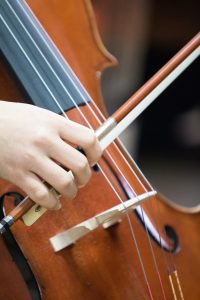Use of text messages for engagement between in-person classes
As a supplement to regular teaching, the teacher sends a text message after class, which may be as text, audio, or video. The text message can contain a brief summary of the day’s topic and 1–2 questions about it. The questions can be open-ended, inviting the student to consider the topic in relation to their own practice. The complexity of the questions is adjusted to the student’s age and level.
Navigate the different aspects of the activity here

The purpose of the activity
- To help the student remember and reflect on the class content
- To encourage the student to think about their own practice in relation to the class
- To extend learning beyond the physical classroom setting
Target audience
Music students and conservatory students

Technology/setup
- Mobile phone
Requirements
Teacher
- Curiosity and an interest in activating the student between sessions
- Be clear about structure, expectations around scope, response time, time commitment, and feedback
- A willingness to allocate time and resources to support the activity between sessions
- A willingness to use an informal tool like text messages for teaching (alternatively, emails can be used)
Student
- An interest in continuing the learning process between physical sessions
Before, during and after the activity
BEFORE
The teacher
- Considers the scope and time commitment, including:
- Whether the student should respond to the text message or simply reflect on the questions until the next class
- Whether feedback will be given on the student’s responses
- Expected response time for both the teacher and the student
- Collects the student’s contact information and obtains consent to communicate via text messages
- Decides on the text message format – text, audio, or video
- Plans the text message content, which may include:
- 1-2 open-ended questions related to the day’s teaching
- A brief summary of the day’s topic, a specific concept, technique, or exercise
- Either prepares the text message content in advance, creates it on an ongoing basis, or adjusts it based on the class or a combination of these
The students
- Understand the purpose and expectations on scope, responses, response time, time commitment, and feedback
- Consent to communicate with the teacher in this more informal way
DURING
The teacher
- Sends text messages with text, audio, or video
- Optionally provides feedback on the student’s responses depending on the agreed format
The students
- Read/listen to/view what the teacher sends via text message
- Reflect on the questions the teacher sends
- Optionally reply to the teacher depending on the agreed format
AFTER
The teacher
- Evaluates the activity with the student in terms of outcome and format
- Reflects on the format and structure
The students
- Evaluate the activity with the teacher in terms of outcome and format
- Reflect on their own participation and effort

Experiences with the activity
Students at the Royal Academy of Music in Aarhus/Aalborg received audio files via text message between classes in music history, summarizing parts of the day’s topic along with 1–2 questions. One student remarked that the text messages were “fun” because “they allow for solo expression; you can say things fairly freely”.
The teacher noted that text messages were “a powerful tool to connect music history with their own practice. My impression was that the students put a lot of thought into their responses—they really considered them carefully”. However, the teacher also observed that expanding the learning space beyond the physical class was not without challenges: “Text or audio messages are a fleeting medium. Once you miss a message, it’s usually forgotten, and if the question isn’t forgotten, it can easily cause stress for the student…”. Another challenge was finding the time to send/respond to text messages. As the teacher explained, “there was no time allocated for creating [text messages] prompts after class, so I made them when I remembered/had time. Next time, I would make sure to plan this in advance” and “responses came gradually, and I usually needed to listen to them as they came and, in some cases, reply. I’d try to plan around this next time, maybe by scheduling”.

As a teacher in Electronic Music History, Lasse Laursen has used text messages to engage his students between classes—listen to Lasse explain the activity, his experiences, and his reflections after its completion.